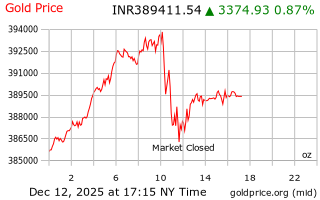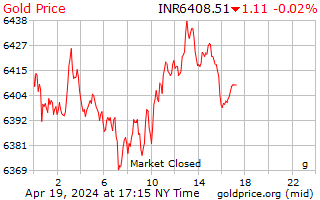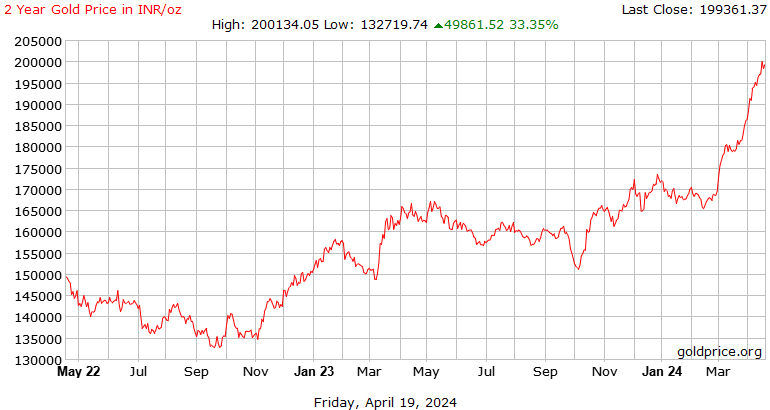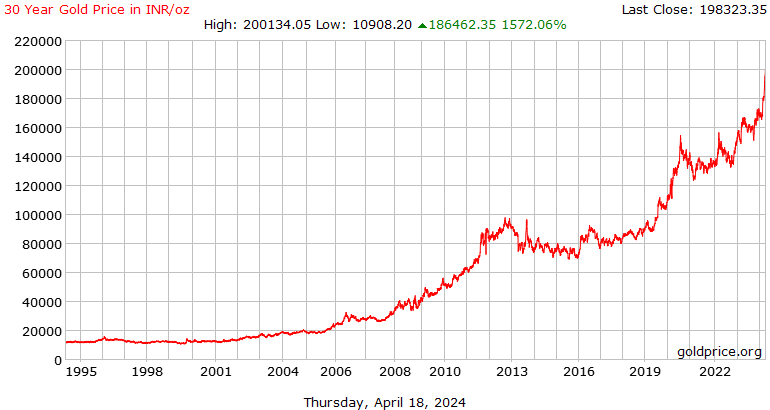Gold Price India
(Indian Rupees)
Conversion : 1 troy ounce = 31.1034768 grams
Indian Rupees 24 Hour Spot Gold and Silver Price
Indian Rupees Gold Price History Charts
To learn about our gold price data
Gold Price India
India is officially known as the Republic of India. India is one of the largest countries by area and the second most populous country in the world. India shares land borders with China, Pakistan, Nepal, Bhutan, Burma and Bangladesh, and it has a population of roughly 1.2 billion citizens. The official languages of India are Hindi and English, although there are numerous other recognised regional languages. India’s government is comprised of a federal parliamentary constitutional socialist republic, and the nation became a republic in 1950.
The Indian Rupee is the official currency of India. The rupee can be subdivided into 10 smaller units, called paise. The Indian Rupee gets its name from the rupiya, a silver coin first issued by Sultan Sher Shah Suri in the 16th century. The currency is issued and controlled by the Reserve Bank of India.
If you are looking to buy gold in India, you will see prices quoted in the local currency. You may also see prices quoted in other key global currencies such as U.S. Dollars, euros, Great British Pounds or Japanese Yen. Gold is typically quoted by the ounce, gram or kilo.
India is one the world’s largest consumers of gold, and the metal plays a special role in the country. The Indian wedding season is famous for fueling demand for gold jewelry, but the jewelry is not simply for aesthetic purposes. Rather, it is considered a reliable store of wealth and value and a symbol of prosperity. Many Indians do not have bank accounts, and inflation may run higher than benchmark interest rates and bond yields. Gold has long been considered an important asset, and the tradition of giving gold remains quite robust today.
The India Government Mint has four operations in the country and was given responsibility for producing the nation’s coinage through the Coinage Act of 1906. In addition to minting circulation coinage for the Reserve Bank of India, the mint also produces coin blanks, commemorative coins and medallions. The Mumbai operation has a gold refining capability of 999.9 percent, and some of its locations also have assaying facilities.
In and around India, gold bars in both 22 carat and 24 carat purities may be widely exchanged, with popular sizes being 1 tola, 5 tola and 10 tola. The tola is a unit of measure originally from South Asia, and one Indian tola is approximately 11.66 grams.
Gold bars represent one of the best overall values when it comes to gold bullion. Unlike gold bullion coins, bars carry no face value and are not considered good, legal tender. They may also be produced at a lower per-ounce cost by refiners when compared to coins. Smaller gold bars like 1 gram or 10 gram bars will typically carry much higher premiums than larger gold bars. This is due to the fact that production costs are relatively similar regardless of the bar’s weight when the metal content is not factored in.



















